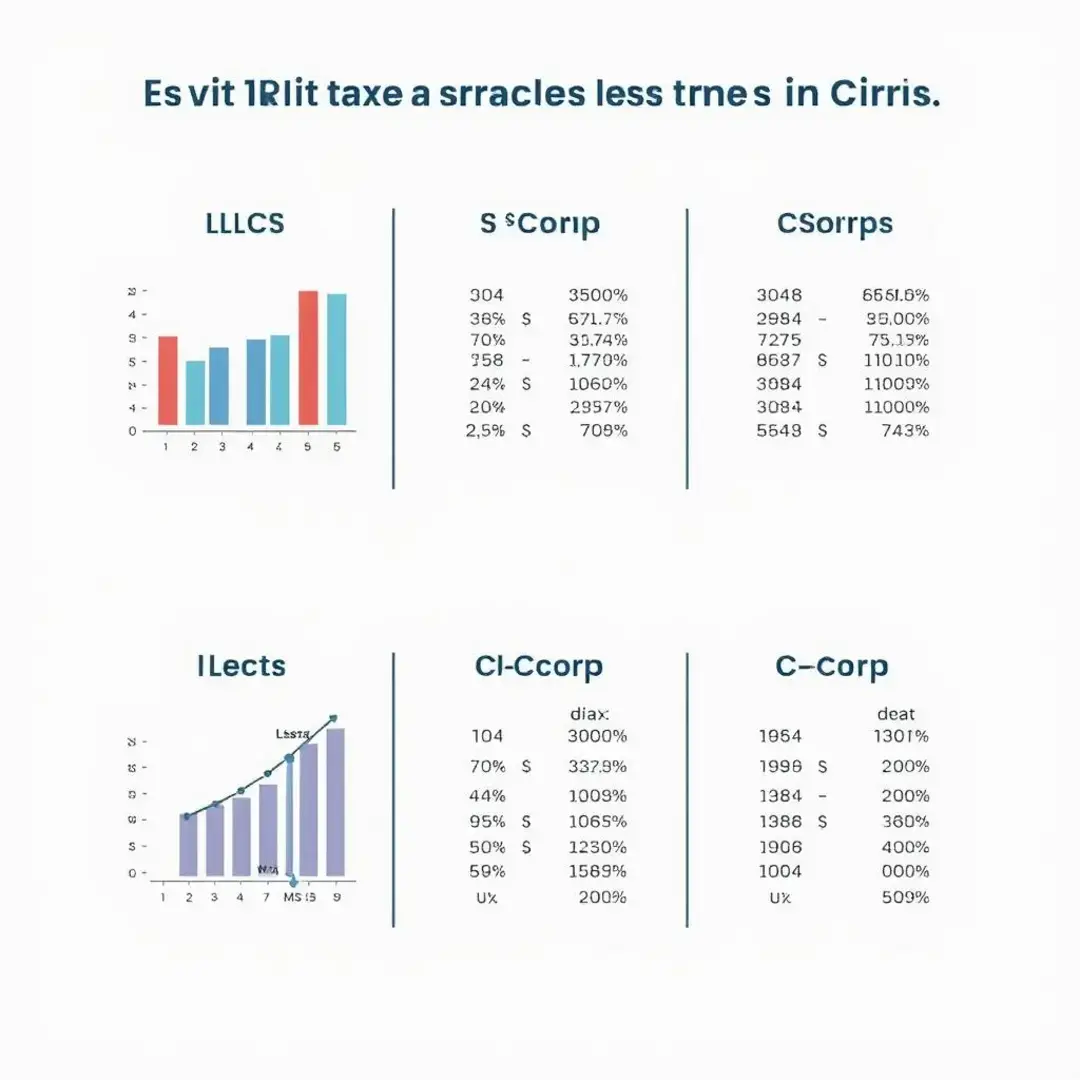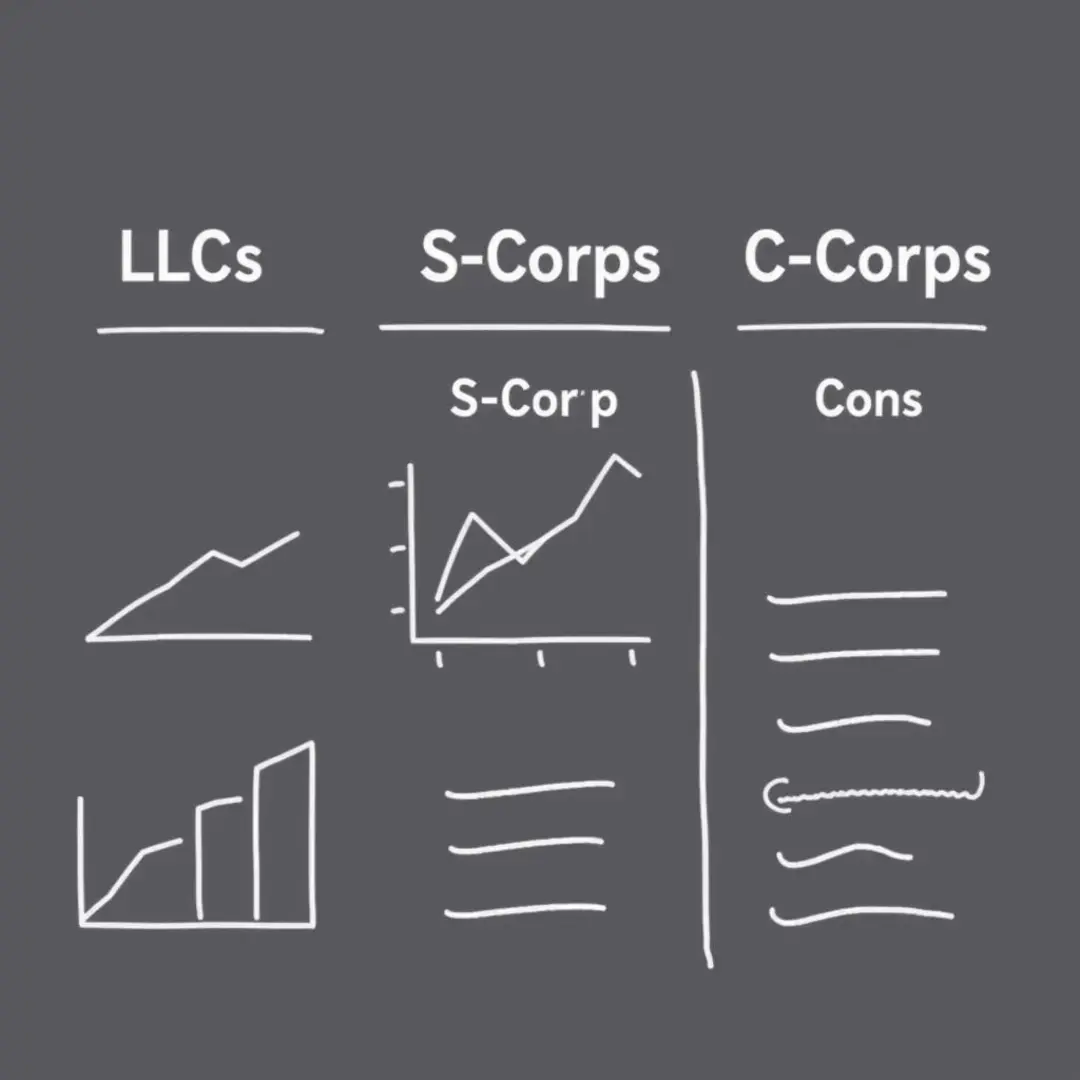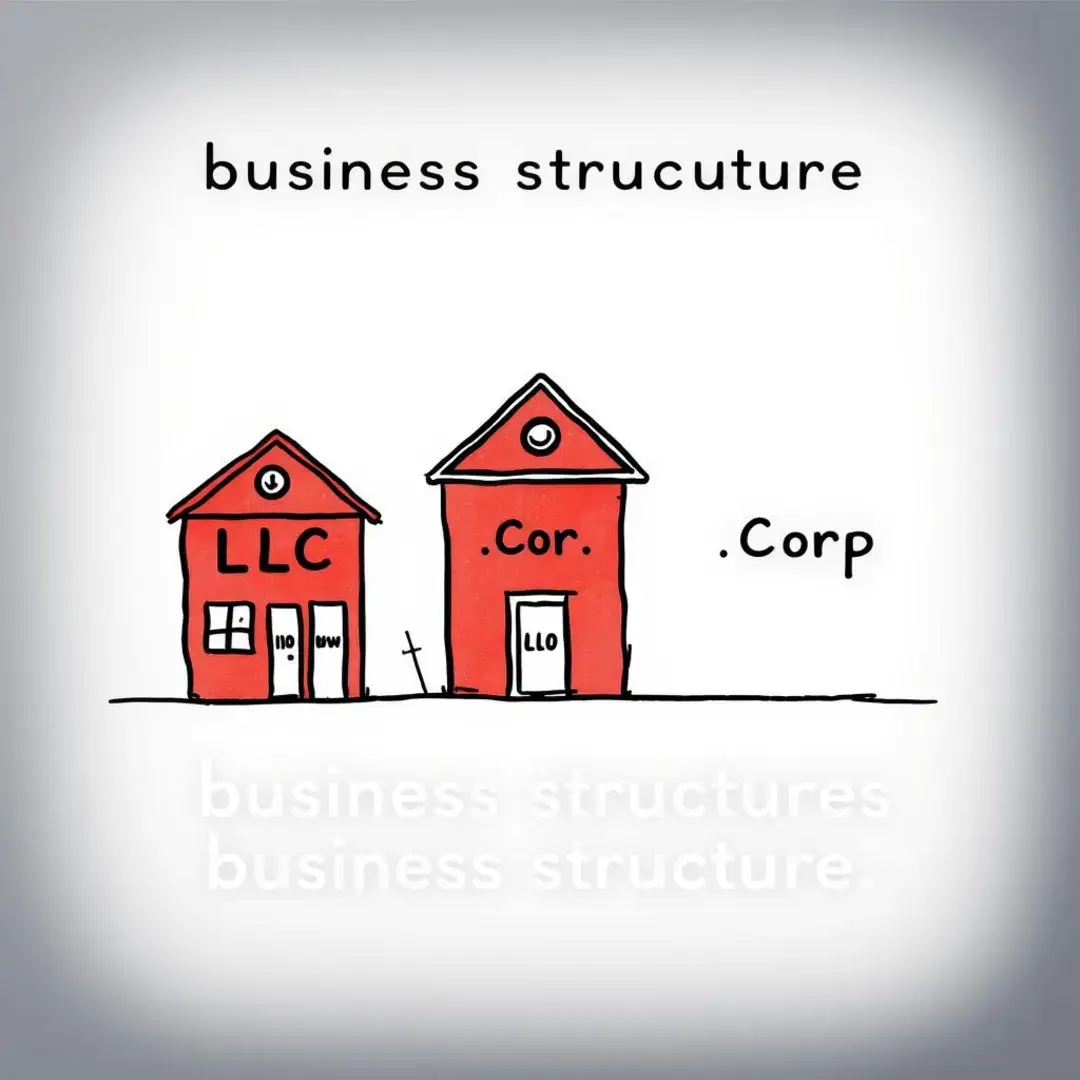A detailed Comparsion of LLCs, S-Corps, and C-Corps
Understanding the Basics

Defining the Legal Structures
A Limited Liability Company, or LLC, is a flexible business structure that combines elements of both corporations and partnerships. LLCs provide owners, known as members, with personal liability protection while allowing for pass-through taxation. This means that the income of the business is taxed only once, at the individual level, avoiding double taxation. Furthermore, LLCs can have an unlimited number of members, enhancing their appeal to many entrepreneurs seeking to start a business.
An S-Corporation, or S-Corp, is a special type of corporation that meets specific Internal Revenue Code requirements. It is designed to avoid the double taxation that typically comes with C-Corps by allowing income, deductions, and tax credits to be passed through to the shareholders. While there is a limit on the number of shareholders—100, to be exact—S-Corps offer the advantage of limited liability protection along with a simplified tax structure, making them a viable option for many small businesses.
A C-Corporation, or C-Corp, is the default form of incorporation in the United States and is distinguished by its ability to issue multiple classes of stock and attract outside investment. Unlike S-Corps, C-Corps are subject to corporate income tax rates and can have an unlimited number of shareholders. However, this structure also means double taxation on dividends, where profits are taxed at the corporate level and again when distributed to shareholders, making it essential for business owners to understand the implications of this structure.
Key Differences at a Glance
Taxation is one of the fundamental differences among LLCs, S-Corps, and C-Corps. LLCs typically enjoy pass-through taxation while S-Corps can also benefit from it but with certain restrictions. In contrast, C-Corps face double taxation, making their taxation structure more complex and less favorable for smaller businesses that may want to distribute profits to their shareholders.
Liability protection is another critical factor to consider. Both LLCs and corporations provide limited liability, which means members and shareholders are generally not personally responsible for the debts and liabilities of the business. This protection becomes particularly important in industries where lawsuits are common, allowing business owners to separate their personal assets from their business liabilities effectively.
The level of administrative requirements also varies significantly among these structures. LLCs usually have fewer ongoing formalities, such as less frequent reporting requirements. In contrast, S-Corps and C-Corps are subject to more stringent regulations, including the maintenance of corporate minutes, annual meetings, and comprehensive reporting to shareholders. This administrative burden can be a significant consideration for busy entrepreneurs focusing on growth.
Deep Dive into Taxation

LLC Taxation Flexibility
LLCs are favored for their pass-through taxation feature, allowing business income to be reported directly on the members’ tax returns. This often results in lower overall taxes and avoids the complex layers of taxation that come with C-Corps. Moreover, members can use business losses to offset other income, providing additional tax-saving opportunities, which is a substantial advantage for startups looking to minimize costs in their initial phases.
LLCs have the unique capability to elect to be taxed as a corporation if advantageous. This flexibility enables business owners to pivot their tax strategy based on the changing dynamics of their operation and profitability. While many startups benefit from initial pass-through taxation, some may choose S-Corp or C-Corp taxation as they grow or if they plan to attract significant investment, allowing them to optimize their financial strategy consistently.
S-Corp Taxation Benefits and Limitations
One of the primary advantages of an S-Corp is its ability to avoid double taxation on corporate earnings. Since income is passed directly to shareholders, it is taxed only at the individual level, offering significant tax benefits for small business owners. However, to maintain this status, businesses must adhere to specific operational limits which could restrict growth or complicate potential expansion plans later on.
Additionally, S-Corps must comply with strict IRS guidelines regarding reasonable salary compensation for shareholders actively involved in the business. This rule can present challenges, particularly for smaller startups where profit margins may fluctuate. Balancing personal compensation with the business’s financial health is key to maximizing the benefits of the S-Corp structure while remaining compliant with tax regulations.
C-Corp Taxation and Its Implications
C-Corps are subject to corporate tax rates, which can range based on the income level and specific deductions applicable. The current federal tax rate stands at a flat 21%, making C-Corps attractive for businesses intending to reinvest earnings rather than distribute them. This structure can prove beneficial for startups planning for growth and scaling operations; however, the tax implications must be strategically managed.
A notable disadvantage of C-Corps is the issue of double taxation on dividends. This phenomenon occurs when profits are taxed at the corporate level, and then again when distributed to shareholders as dividends. Such a framework can deter some investors who prefer organizational models where their returns are not subjected to additional layers of taxation, making this an important factor when considering business structure.
Liability and Legal Considerations

Piercing the Corporate Veil
One of the significant benefits of forming an LLC is the limited liability it provides to its members. Generally, creditors cannot pursue personal assets to satisfy the business’s debts, protecting the personal wealth of the owners. However, it is crucial to maintain proper formalities and separate personal and business finances to uphold this privilege; otherwise, members run the risk of “piercing the corporate veil.”
Similar to LLCs, shareholders in an S-Corp typically enjoy limited liability protections. These protections mean that individual shareholders are normally not responsible for the company’s debts or liabilities. Nevertheless, improper management or failure to adhere to corporate formalities can jeopardize this protection, emphasizing the importance of compliance with state and federal regulations.
C-Corps, too, provide shareholders with limited liability, safeguarding personal assets from business debts. This structure is particularly appealing for businesses seeking large-scale investment, as it minimizes risk for investors. Nonetheless, mismanagement or commingling of personal and corporate funds can lead to a loss of this protection, necessitating diligence in corporate governance and financial practices.
Legal Compliance and Ongoing Requirements
All corporate structures come with legal obligations that necessitate consistent compliance, including the filing of annual reports. LLCs tend to face fewer requirements compared to S-Corps and C-Corps; however, maintaining good standing requires diligence across all forms. Failing to meet these obligations can result in various penalties and potentially jeopardize the operational status of the business.
An operating agreement is crucial for LLCs, outlining operational procedures, member roles, and profit distribution. For S-Corps and C-Corps, corporate bylaws fulfill a similar purpose, detailing corporate governance and shareholder rights. Both agreements solidify the structure and operations of the business, which can be critically important when disputes arise or if the business needs to pivot.
Advanced Considerations for Choosing a Structure

Impact on Fundraising and Investment
While LLCs can attract investors, this structure may limit access to traditional venture capital due to the more complex financial arrangements often preferred by investors. Investors typically favor structures that align with their investment strategies, which might lead them to prefer S-Corps or C-Corps where more predictable financial predictions can be established. Hence, entrepreneurs should weigh their potential funding needs against their choice of business structure carefully.
S-Corps may find it somewhat easier to attract individual investors, particularly if the business aligns with their investment portfolios. Though S-Corps can only have 100 shareholders, the pass-through taxation can be attractive for certain investors who seek to benefit from the company’s financial performance without incurring the added complexities of double taxation. This aspect often makes S-Corps appealing for small, closely-held businesses intent on growth.
C-Corps are generally the most favorable structure for attracting significant investment, especially from venture capitalists and institutional investors. The capacity to issue various classes of stock allows C-Corps to accommodate diverse investor needs and preferences, including control features and dividend yields. The structure’s predictability in taxation combined with the wealth of funding mechanisms makes C-Corps an industry favorite for businesses poised for significant growth or initial public offerings.
Long-Term Growth and Exit Strategies
In terms of exit strategies, LLCs might find mergers and acquisitions a bit more complex due to the flexible nature of their agreements. Transitioning ownership can be more arduous without a predefined structure compared to corporations that have formalized bylaws. On the other hand, C-Corps often find it easier to merge or be acquired, with a well-defined structure that adds clarity and simplicity to the process.
An initial public offering (IPO) is generally not feasible for LLCs, which is a considerable drawback for businesses eyeing a public offering as a pathway to growth and funding. C-Corps are inherently structured to go public, allowing for significant capital influx and increased market visibility. For startups looking towards long-term growth and exit strategies, selecting the right entity is critical to ensuring that the desired growth path remains viable.
Making the Right Choice for Your Business

Weighing the Pros and Cons
When deciding on the appropriate business structure, entrepreneurs should create a decision matrix weighing the pros and cons specific to their unique circumstances. This evaluation should include considerations of tax implications, liability protections, administrative responsibilities, and long-term goals. Such a systematic approach can help illuminate the best choice for your business aspirations and operational style.
Consulting with Professionals
Engaging with legal professionals familiar with business formations is paramount in navigating the complexities of entity choices. An experienced attorney can provide insights into local regulations and industry-specific concerns that could influence your decision. This knowledge can be especially valuable for startups that may be unfamiliar with the legal landscape and the importance of choosing the right structure.
Consulting with tax advisors can be equally beneficial, as they can illustrate the implications of each business structure on your tax strategy. By understanding the unique tax benefits and challenges associated with LLCs, S-Corps, and C-Corps, you can make informed decisions that align with your financial goals. A collaborative approach between legal and tax advisors can provide comprehensive insights necessary for setting your business up for success.












